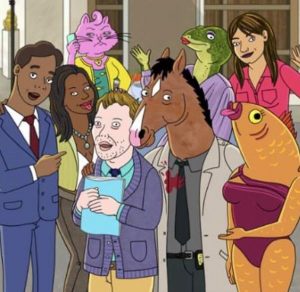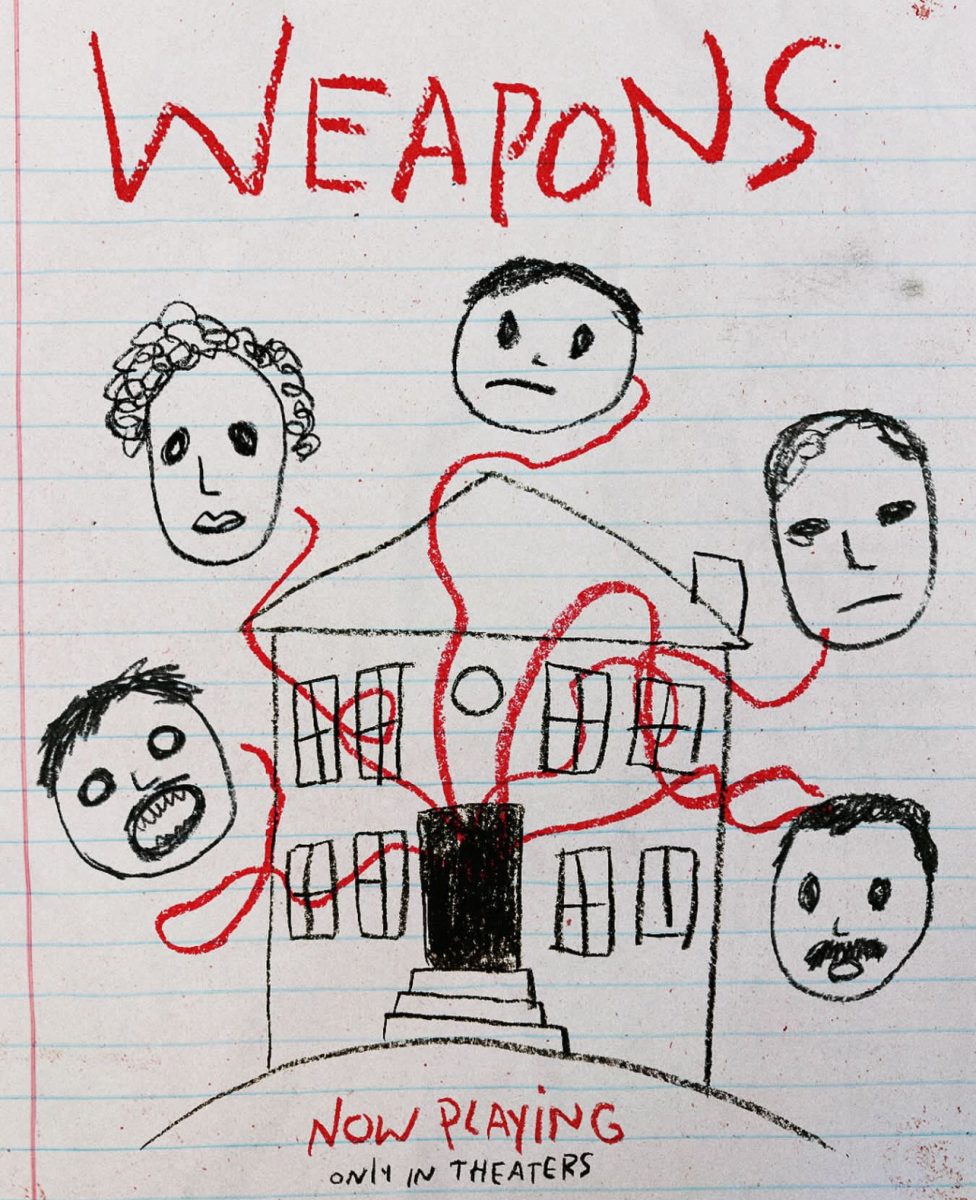By Briana Scalia
Few shows can get away with as much as “Bojack Horseman” has managed to do. In the past four seasons, this animated comedy has become a staple of Netflix’s original lineup.
The show features characters that struggle with life as much as the average viewer, voiced by an incredibly talented cast going through the motions of the day-to-day while also living in the supposedly glamourous world of “Hollywoo.” Season five not only continues the excellence of this show, but expands on it in such a meta way, one cannot help but feel self-aware while watching it.
Season five picks up during a scene of titular character Bojack’s new show “Philbert,” in which Bojack plays a hardened detective. Immediately viewers will be able to spot the parallels between Bojack and Philbert, even down to the set of “Philbert” appearing nearly identical to Bojack’s own home.
As the season continues, the similarities between Bojack and his character compile, until the show reaches a point where Bojack himself becomes the unreliable narrator, not realizing he is filming a scene until minutes in. Filming the show becomes yet another challenge for Bojack, as he continues to struggle with the guilt of his past mistakes, of which there are many.
By integrating these pivotal character moments with the season’s overall arc, no moment feels wasted. Every major character is involved with the shooting of “Philbert” in some way, whether they be producer, writer or leading actor. The show itself is taxing on the characters, and it influences many of the decisions they make this season.
The beauty of this show is that it never forgets. In fact, the characters in “Bojack Horseman” are so meticulously picked apart that sometimes even the viewer forgets some of their problematic behavior; some viewers might even be tempted to willingly ignore these actions.
Bojack himself is the archetype of the privileged white actor, but he is also a man (well, an anthropomorphic horse) trying to overcome his depression and several addictions. He reaches out to others when he sees they are in pain and is uncomfortable with the constant injustices that infect his career. Unfortunately, his attempts at compassion often lead to, at best, misunderstandings, and, at worst, induced trauma.
Later in the season, as Diane deals with her own crisis after her divorce with Mr. Peanutbutter, she discovers that Bojack almost had a compromising relationship with his ex-girlfriend’s 17-year-old daughter, Penny Carlson, after he was turned down by her mother. But the information Diane lacks is that Bojack and Penny became close after he offered to take her to prom when her love interest decided on someone else.
Bojack Horseman is not a bad person, but he is not a good person either. Diane herself explains towards the season’s end that people cannot be good nor bad. People can only make good or bad decisions, and one cannot overshadow the other. Diane comes to this realization after her own internal conflict regarding her involvement with “Philbert,” and its subsequent popularity.
In retaliation for Bojack not confiding in her about his situation with Penny, Diane creates a scene in the show that mirrors the moment where Bojack and Penny almost became intimate, going so far as to include dialogue Bojack used himself in the aftermath. But in doing so, Diane has made the character problematic, which in turn makes the character relatable.
After the show’s screening, she is horrified by the concept that fans of the show, specifically of Philbert himself, will subconsciously use the character’s transgressions to forgive their own. As Diane comes to this realization, so too have the creators of “Bojack Horseman,” along with several other screenwriters.
An interesting character must be an interesting person, fleshed out and exposed for the audience; but interesting people do not always make the best choices. With this revelation comes the modern writer’s dilemma of what is more important: creating characters the average person can relate to or creating characters the average person can strive to imitate.
As it stands, most of the characters of “Bojack Horseman” are nowhere near role models; with every step forward, they take three steps back. Diane ostensibly moves on from her relationship with Mr. Peanutbutter, only to have a fling with him towards the end of the season. Mr. Peanutbutter takes steps to be honest with his new girlfriend Pickles, then chooses to spring a proposal on her rather than admit he cheated on her. Bojack begins the season actively fighting the sexist writing of his show, then ends the show physically assaulting his female co-star.
These characters do not have arcs; their growth is in no way permanent. But by writing characters that experience highs and lows, the screenwriters of “Bojack Horseman” have created some of the most lifelike characters of modern television, set in the most realistic of situations.
And that is the most depressing aspect of “Bojack Horseman”; even with all of its bright colors and comedic characters, it exposes the worst parts of humanity.
An old movie star makes an “apology tour” after his latest scandal. A screenwriter justifies his gratuitous sexual scenes. A show’s cast covers up a case of serious physical assault. Watching “Bojack Horseman” does not serve as an escape from life, but rather a painful reminder.







































































































































































































